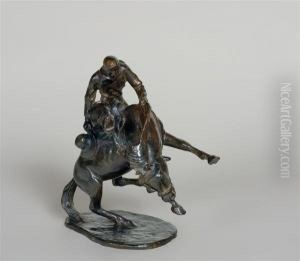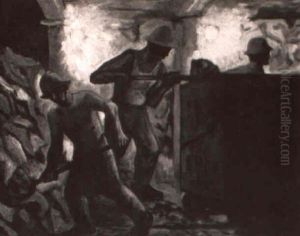Joseph Jacinto Mora Paintings
Joseph Jacinto Mora, known affectionately as Jo Mora, was born on October 22, 1876, in Montevideo, Uruguay. The son of a sculptor and a half-Catalan mother, Mora was immersed in an artistic environment from an early age. His family moved to the United States in the 1880s, settling in the East Coast where he would later attend art schools in New York and Boston, honing his skills in a wide range of artistic disciplines. Mora's talent was not confined to a single medium; he was a true polymath, adept in sculpture, painting, illustration, cartography, and writing. His diverse skills and interests would define his eclectic career.
In the early 20th century, Mora ventured to the American West, where he became deeply enamored with the culture, history, and landscapes of California and the Southwest. This fascination with the West would become a central theme in his work, leading him to create a series of detailed, whimsical maps that depicted the history and folklore of the regions he explored. These 'cartes,' as he called them, combined his artistic skill with his love of storytelling, making them popular among both art collectors and historians.
Mora's body of work is not only notable for its breadth but also for its depth. He had a keen interest in Native American cultures and spent time living with the Navajo, Hopi, and Pueblo peoples, among others. This experience allowed him to depict these cultures with a level of authenticity and respect not often seen in the work of other artists of his time. Additionally, Mora authored and illustrated several books, including children's books, which further showcased his storytelling prowess and his ability to captivate audiences of all ages.
Despite his contributions to art and cultural preservation, Joseph Jacinto Mora remains somewhat of an underappreciated figure in the annals of American art history. He passed away on October 10, 1947, in Monterey, California, leaving behind a rich legacy that offers a unique window into the American West and its diverse cultures. Today, his works are cherished by collectors and museums, serving as a testament to his artistic genius and his deep love for the stories and landscapes that shaped the American identity.

